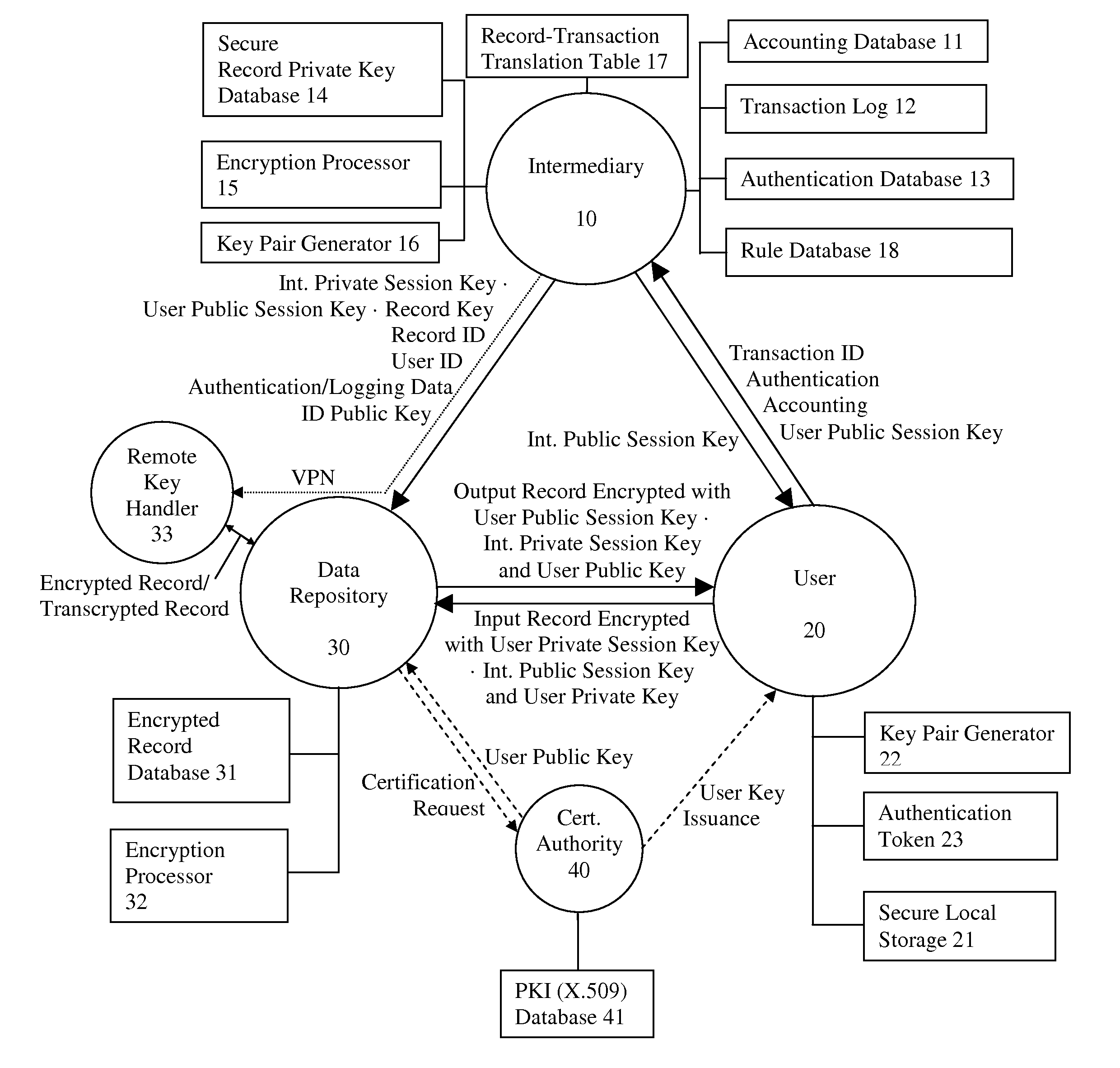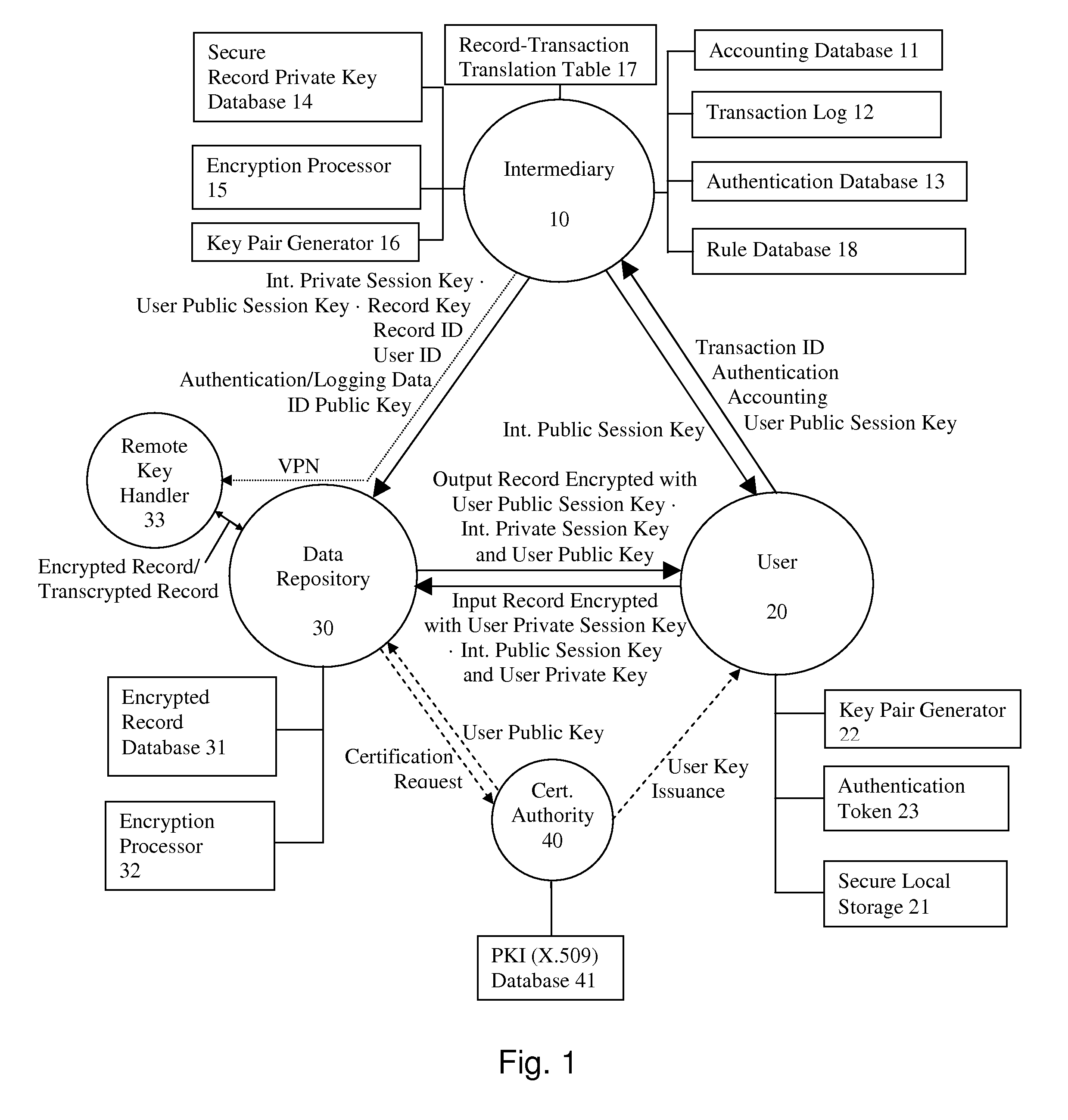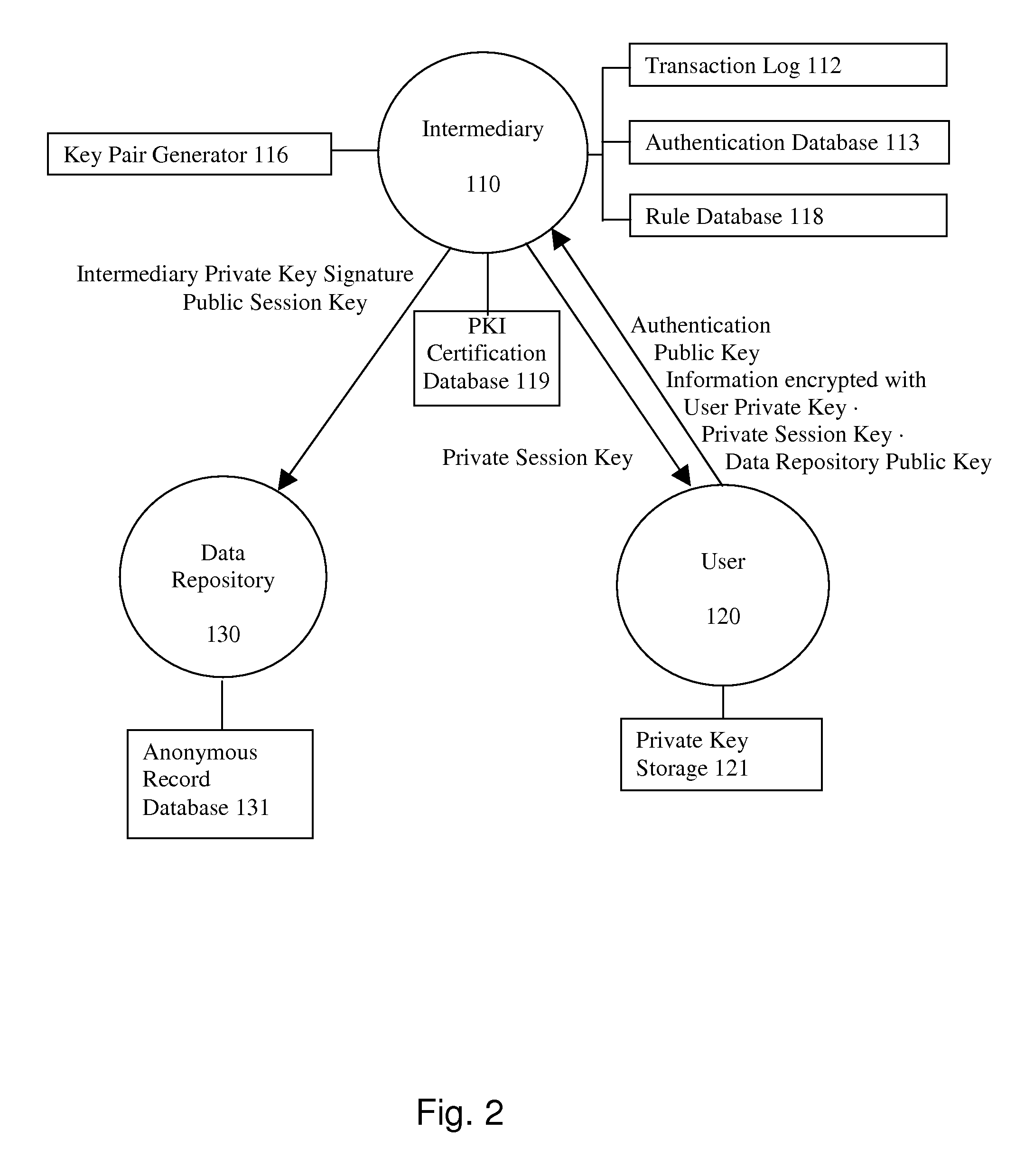System and method for secure communications involving an intermediary
a technology of intermediary and communication, applied in the direction of secret communication, digital transmission, instruments, etc., can solve the problem that the intermediary never has sufficient information to unilaterally intercept and decrypt communication, and achieves efficient and robust transactions, reducing risks and liabilities
- Summary
- Abstract
- Description
- Claims
- Application Information
AI Technical Summary
Benefits of technology
Problems solved by technology
Method used
Image
Examples
example 1
[0134]The transactional details are now described with respect to FIG. 1. While there are three particular parties to the process, the User 20, the Data Repository 30, and the Intermediary 10, a fourth party, a Certification Authority 40 is also generally involved. It is also noted that, while the process shown in FIG. 1 generally provides a communication flow of information from the Data Repository 30 to the User 20, this communication stream may also be reversed, allowing the User 20 to upload information to the Encrypted Database 31 of the Data Repository 30, using a set of User 20 and Intermediary 10 Session Keys and the User 20 Persistent Private Key. At the Remote Key Handler 33, the encrypted message is transcrypted with the Record Public Key, securely supplied by the Intermediary 10 through a virtual private network (VPN)-type arrangement, passing through the Data Repository 30.
[0135]The User 20 initiates the transaction by contacting the Intermediary 10, which typically mai...
example 2
[0165]The transactional details of a second embodiment of the invention are now described with respect to FIG. 2. FIG. 2 is similar to FIG. 1, with a number of simplifications, and notably, an absence of a direct communications path between the User 120 and the Data Repository 130. This allows an anonymous communication through the Intermediary 110 as a proxy.
[0166]As shown in FIG. 2, the User 120 transmits a datastream to the Intermediary 110, which includes authentication information, the User's public key, and a message encrypted with:
User Private Key·Private Session Key·Data Repository Public Key
[0167]The Intermediary 110 resorts to its Authentication Database 113, PKI Certification Database 119 and Rule Database 118 to verify the authority and access privileges of the User 120. The transactional details are stored in the Transaction Log 112. During the initial communication between the User 120 and Intermediary 110, the Intermediary 110 generates a Public and Private Session Ke...
example 3
[0169]FIG. 3 shows a simplified generic schematic arrangement for a three-party transaction. In FIG. 3, three parties are involved in communication of a message. Separate authentication authorities, may serve as traditional certification authorities in a public key infrastructure, or may provide greater or lesser services to respective parties, or may be integrated within one or more of the three integral parties. FIG. 3 shows that the User 320 communicates message set-up information with the Intermediary 310, in a communication in which the authenticity of the parties may be verified by Authentication Authority 341. The Intermediary 310 correspondingly communicates message set-up information to Data Repository 330, in a communication in which the authenticity of the parties may be verified by Authentication Authority 342. Finally, the Data Repository 330 and User 320 conduct an encrypted communication in either direction based on the set-up information, in a communication in which ...
PUM
 Login to View More
Login to View More Abstract
Description
Claims
Application Information
 Login to View More
Login to View More - R&D
- Intellectual Property
- Life Sciences
- Materials
- Tech Scout
- Unparalleled Data Quality
- Higher Quality Content
- 60% Fewer Hallucinations
Browse by: Latest US Patents, China's latest patents, Technical Efficacy Thesaurus, Application Domain, Technology Topic, Popular Technical Reports.
© 2025 PatSnap. All rights reserved.Legal|Privacy policy|Modern Slavery Act Transparency Statement|Sitemap|About US| Contact US: help@patsnap.com



